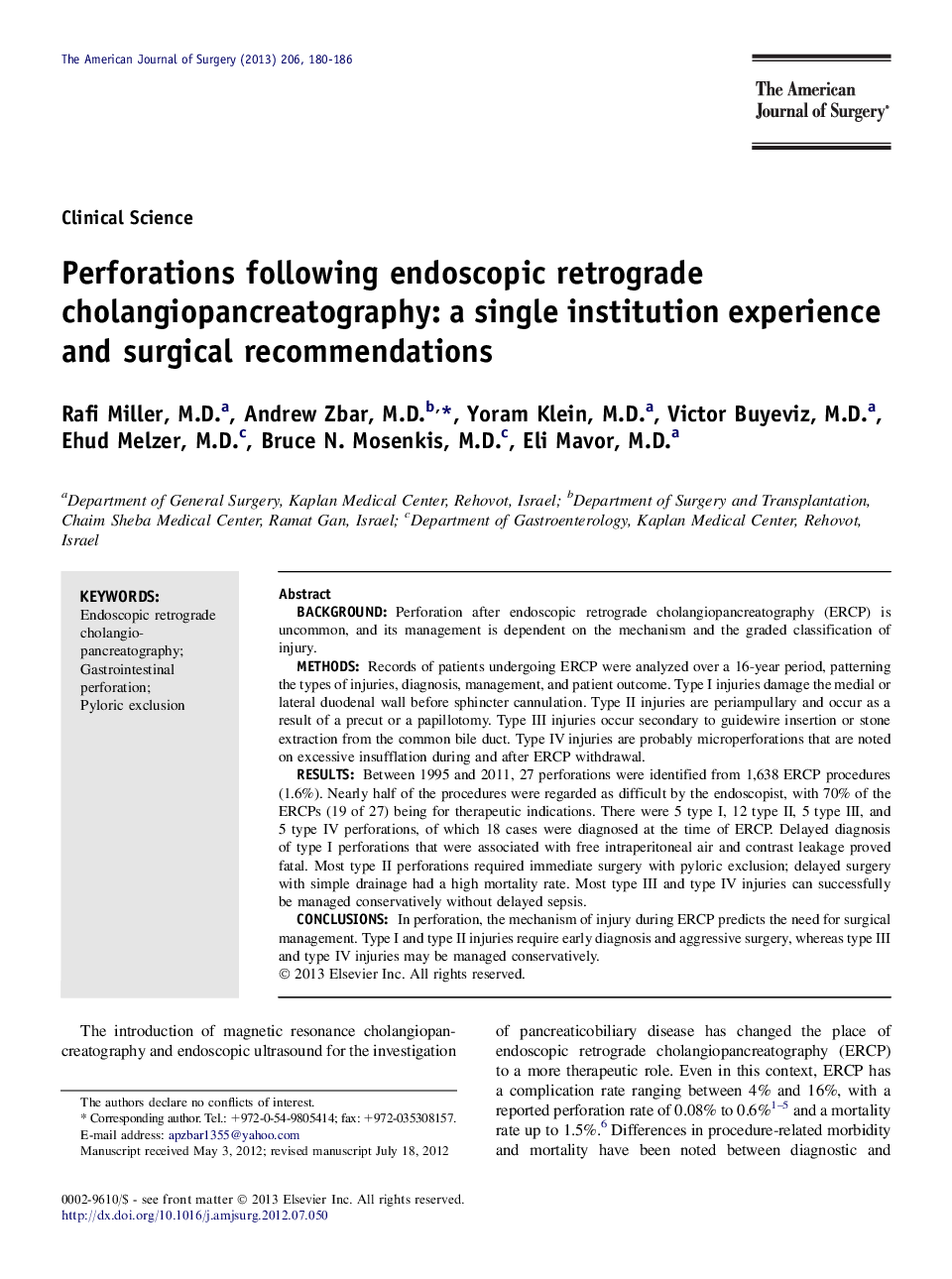| کد مقاله | کد نشریه | سال انتشار | مقاله انگلیسی | نسخه تمام متن |
|---|---|---|---|---|
| 4279166 | 1611516 | 2013 | 7 صفحه PDF | دانلود رایگان |

BackgroundPerforation after endoscopic retrograde cholangiopancreatography (ERCP) is uncommon, and its management is dependent on the mechanism and the graded classification of injury.MethodsRecords of patients undergoing ERCP were analyzed over a 16-year period, patterning the types of injuries, diagnosis, management, and patient outcome. Type I injuries damage the medial or lateral duodenal wall before sphincter cannulation. Type II injuries are periampullary and occur as a result of a precut or a papillotomy. Type III injuries occur secondary to guidewire insertion or stone extraction from the common bile duct. Type IV injuries are probably microperforations that are noted on excessive insufflation during and after ERCP withdrawal.ResultsBetween 1995 and 2011, 27 perforations were identified from 1,638 ERCP procedures (1.6%). Nearly half of the procedures were regarded as difficult by the endoscopist, with 70% of the ERCPs (19 of 27) being for therapeutic indications. There were 5 type I, 12 type II, 5 type III, and 5 type IV perforations, of which 18 cases were diagnosed at the time of ERCP. Delayed diagnosis of type I perforations that were associated with free intraperitoneal air and contrast leakage proved fatal. Most type II perforations required immediate surgery with pyloric exclusion; delayed surgery with simple drainage had a high mortality rate. Most type III and type IV injuries can successfully be managed conservatively without delayed sepsis.ConclusionsIn perforation, the mechanism of injury during ERCP predicts the need for surgical management. Type I and type II injuries require early diagnosis and aggressive surgery, whereas type III and type IV injuries may be managed conservatively.
Journal: The American Journal of Surgery - Volume 206, Issue 2, August 2013, Pages 180–186